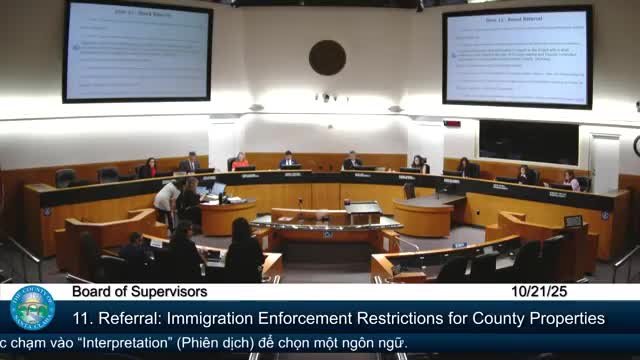Report on Financing Universal Electricity Access in Africa in Alignment with Sustainable Development Goals
1.0 Introduction: The Imperative for SDG 7 in Africa
Access to electricity is a foundational requirement for achieving multiple Sustainable Development Goals (SDGs), including poverty reduction (SDG 1), economic growth (SDG 8), and social equity (SDG 10). However, a significant deficit persists in Africa, directly impeding progress towards SDG 7 (Affordable and Clean Energy). This report outlines the current financing landscape, challenges, and strategic imperatives for achieving universal electricity access across the continent.
2.0 Status of Electricity Access and SDG Implications
The current state of electricity access in Africa presents a critical development challenge with wide-ranging implications for the SDGs.
- Access Deficit: Approximately 600 million people in Africa currently lack access to electricity.
- Impact on SDGs: This gap severely hinders progress on:
- SDG 1 (No Poverty): Lack of electricity limits economic opportunities and perpetuates poverty cycles.
- SDG 8 (Decent Work and Economic Growth): Energy is a critical input for industrialization, entrepreneurship, and job creation.
- SDG 10 (Reduced Inequalities): The energy access gap exacerbates inequalities between urban and rural populations and undermines social equity.
- Progress vs. Targets: Current progress is significantly lagging behind the targets established by African governments and the international community for achieving SDG 7.
3.0 Investment and Financing Requirements for SDG 7
A substantial increase in targeted investment is necessary to bridge the access gap. The International Energy Agency (IEA) report, Financing Electricity Access in Africa, provides a comprehensive analysis of the financial requirements.
- Annual Investment Need: Reaching universal access requires an annual investment of USD 15 billion.
- Key Investment Areas:
- Expansion of generation capacity.
- Development of grid networks.
- Scale-up of decentralised energy solutions.
- Financing Landscape Analysis: The IEA report offers a first-of-its-kind tracking of public and private investment flows, quantifying the required scale of financing and highlighting affordability challenges.
4.0 The Role of International Cooperation and Partnerships (SDG 17)
Achieving universal electricity access is a global responsibility that necessitates robust international partnerships, aligning with SDG 17 (Partnerships for the Goals).
- Strategic Mobilization: The international community is mobilizing to address this challenge, with key initiatives and leadership roles from:
- South Africa’s G20 leadership.
- Brazil’s COP30 Presidency.
- The Mission 300 initiative.
- Strategic Direction: The IEA’s analysis emphasizes the need to strategically direct international finance, resources, and technical expertise. This targeted approach is essential to drive the necessary transformation and support Africa’s broader economic, social, and environmental goals, ensuring a sustainable and inclusive energy future for all.
1. Which SDGs are addressed or connected to the issues highlighted in the article?
The article on financing electricity access in Africa connects to several Sustainable Development Goals (SDGs) due to the foundational role of energy in development. The following SDGs are addressed:
- SDG 7 (Affordable and Clean Energy): This is the most central SDG discussed. The entire article revolves around the challenge of providing universal access to electricity in Africa, which is the primary objective of this goal.
- SDG 1 (No Poverty): The article explicitly states that access to electricity is a cornerstone for “poverty reduction.” Energy access enables economic activities, improves living standards, and provides opportunities that help lift people out of poverty.
- SDG 8 (Decent Work and Economic Growth): The text directly links electricity access to “economic development.” Reliable energy is essential for powering industries, businesses, and services, which in turn create jobs and foster economic growth.
- SDG 10 (Reduced Inequalities): The report highlights the importance of “social equity” and ensuring that progress in electricity access remains “inclusive.” Addressing the gap between those with and without electricity helps reduce inequalities within and among countries.
- SDG 17 (Partnerships for the Goals): The article emphasizes the need for international cooperation and financial mobilization. It mentions the role of the “international community,” the “G20,” and “Brazil’s COP30 Presidency” in providing financial support and underscores that “international finance, resources and technical expertise must be strategically directed” to solve the issue.
2. What specific targets under those SDGs can be identified based on the article’s content?
Based on the issues discussed, the following specific SDG targets can be identified:
- Target 7.1: By 2030, ensure universal access to affordable, reliable and modern energy services.
- Justification: The article’s main focus is on the goal of “Reaching universal electricity access” in Africa to serve the nearly 600 million people who currently lack it.
- Target 1.4: By 2030, ensure that all men and women, in particular the poor and the vulnerable, have equal rights to economic resources, as well as access to basic services…
- Justification: The article frames electricity as a fundamental service for “poverty reduction” and “social equity,” aligning with the goal of ensuring access to basic services for the poor and vulnerable.
- Target 8.1: Sustain per capita economic growth in accordance with national circumstances…
- Justification: The report identifies electricity access as a “cornerstone for economic development,” implying that expanding energy infrastructure is a prerequisite for sustaining economic growth across the continent.
- Target 10.2: By 2030, empower and promote the social, economic and political inclusion of all…
- Justification: The call to ensure that progress “remains inclusive” directly relates to this target. Providing electricity to underserved populations is a key step in promoting their social and economic inclusion.
- Target 17.3: Mobilize additional financial resources for developing countries from multiple sources.
- Justification: The article quantifies the financial need, stating that achieving universal access requires a “rapid scale-up of investment and financing to USD 15 billion per year.” It also points to the mobilization of the “international community” to provide this support.
3. Are there any indicators mentioned or implied in the article that can be used to measure progress towards the identified targets?
Yes, the article mentions and implies several quantitative and qualitative indicators that can be used to measure progress:
- Indicator for Target 7.1 (Implied: 7.1.1 – Proportion of population with access to electricity):
- Evidence: The article provides a baseline figure by stating that “almost 600 million people in Africa lack access to electricity today.” Progress can be measured by tracking the reduction of this number over time.
- Indicator for Target 17.3 (Implied: 17.3.1 – Additional financial resources mobilized for developing countries):
- Evidence: The report specifies the required financial flow: “USD 15 billion per year.” This figure serves as a benchmark indicator to measure whether the international community’s investment and financing efforts are meeting the required scale. The IEA’s tracking of “public and private investment flows” is a direct measurement related to this indicator.
- Indicator for SDG 1, 8, and 10 (Qualitative):
- Evidence: While not providing specific numbers, the article’s emphasis on “economic development, poverty reduction and social equity” implies that the impact of electricity access should also be measured through socio-economic indicators such as GDP growth rates, poverty levels, and income inequality indices in newly electrified regions.
4. Table of SDGs, Targets, and Indicators
| SDGs | Targets | Indicators Identified in the Article |
|---|---|---|
| SDG 7: Affordable and Clean Energy | 7.1: Ensure universal access to affordable, reliable and modern energy services. | The number of people lacking electricity access (currently “almost 600 million people in Africa”). |
| SDG 1: No Poverty | 1.4: Ensure access to basic services for the poor and vulnerable. | The connection between electricity access and “poverty reduction” is highlighted as a key outcome. |
| SDG 8: Decent Work and Economic Growth | 8.1: Sustain per capita economic growth. | Electricity access is described as a “cornerstone for economic development.” |
| SDG 10: Reduced Inequalities | 10.2: Promote the social and economic inclusion of all. | The need for progress to be “inclusive” and promote “social equity.” |
| SDG 17: Partnerships for the Goals | 17.3: Mobilize additional financial resources for developing countries. | The required annual investment (“USD 15 billion per year”) and the tracking of “public and private investment flows.” |
Source: iea.org







